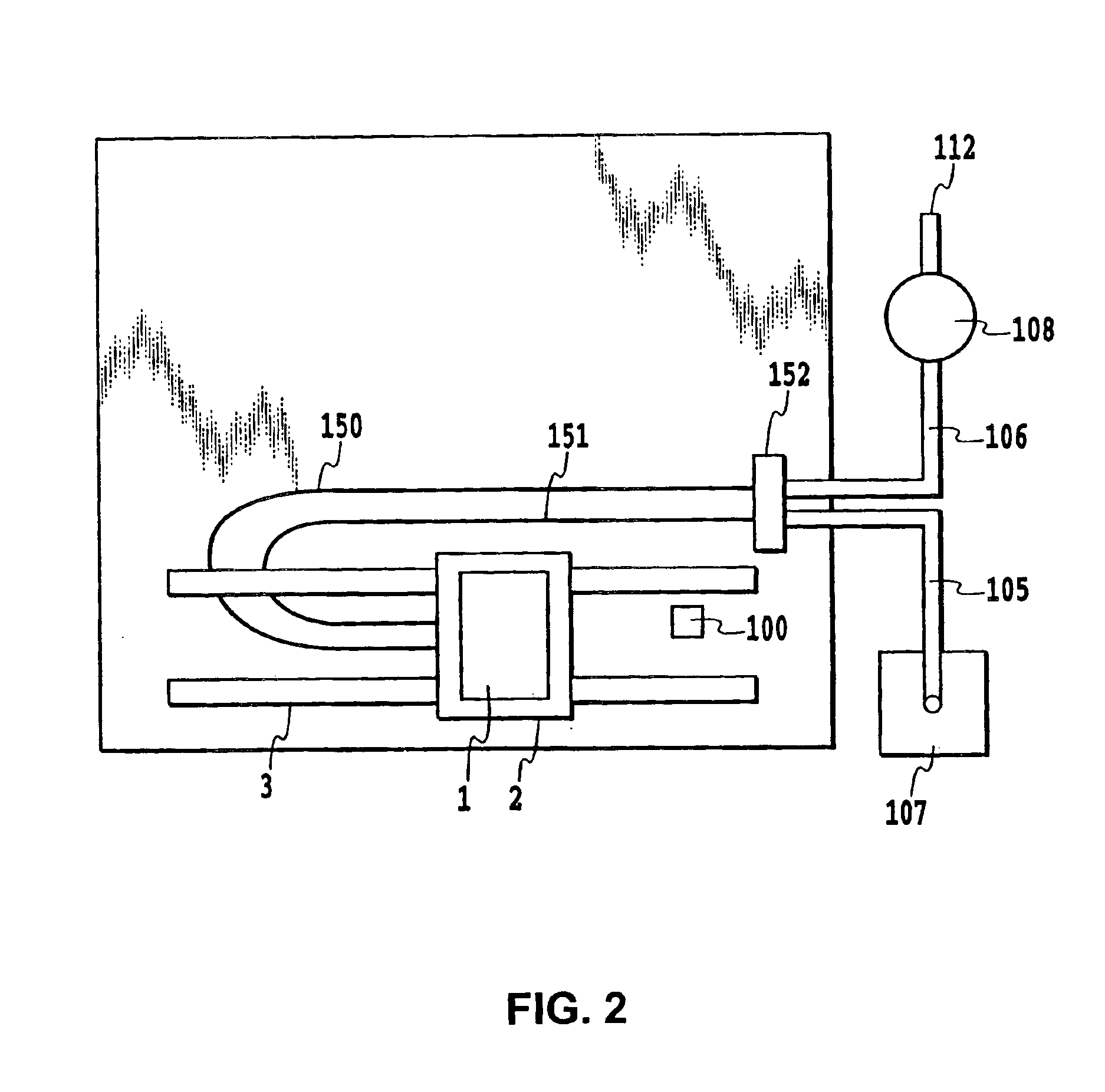Ink container, inkjet printing apparatus and ink supplying method
a technology of inkjet printing and ink, which is applied in the field of ink supply methods, ink supply methods, ink supply containers, etc., can solve the problems of difficult to make the apparatus as a whole compact, inability to design such printers in adaptation, and limited capacity of ink tanks, etc., to achieve easy maintenance of ink endurance, short charging time, and high charging efficiency
- Summary
- Abstract
- Description
- Claims
- Application Information
AI Technical Summary
Benefits of technology
Problems solved by technology
Method used
Image
Examples
Embodiment Construction
[0076]The invention will now be described in detail with reference to the drawings.
(Example of Structure of Inkjet Printing Apparatus)
[0077]FIG. 1 is a schematic plan view showing a general structure of an inkjet printing apparatus utilizing an intermittent supply system according to an embodiment of the invention.
[0078]In the structure in FIG. 1, a printing head unit 1 is replaceably mounted on a carriage 1. The printing head unit 1 has a printing head section and a second ink tank section, and there is provided a connector (not shown) for transmitting signals such as a drive signal for driving the head section to cause an ink ejecting operation of a nozzle. The carriage 2 on which the printing head unit 1 is positioned and replaceably mounted is provided with a connector holder (electrical connecting section) for transmitting signals such as the drive signal to the printing head unit 1 through the connector.
[0079]The carriage 2 is guided and supported by a guide shaft 3 provided o...
PUM
 Login to View More
Login to View More Abstract
Description
Claims
Application Information
 Login to View More
Login to View More - R&D
- Intellectual Property
- Life Sciences
- Materials
- Tech Scout
- Unparalleled Data Quality
- Higher Quality Content
- 60% Fewer Hallucinations
Browse by: Latest US Patents, China's latest patents, Technical Efficacy Thesaurus, Application Domain, Technology Topic, Popular Technical Reports.
© 2025 PatSnap. All rights reserved.Legal|Privacy policy|Modern Slavery Act Transparency Statement|Sitemap|About US| Contact US: help@patsnap.com



